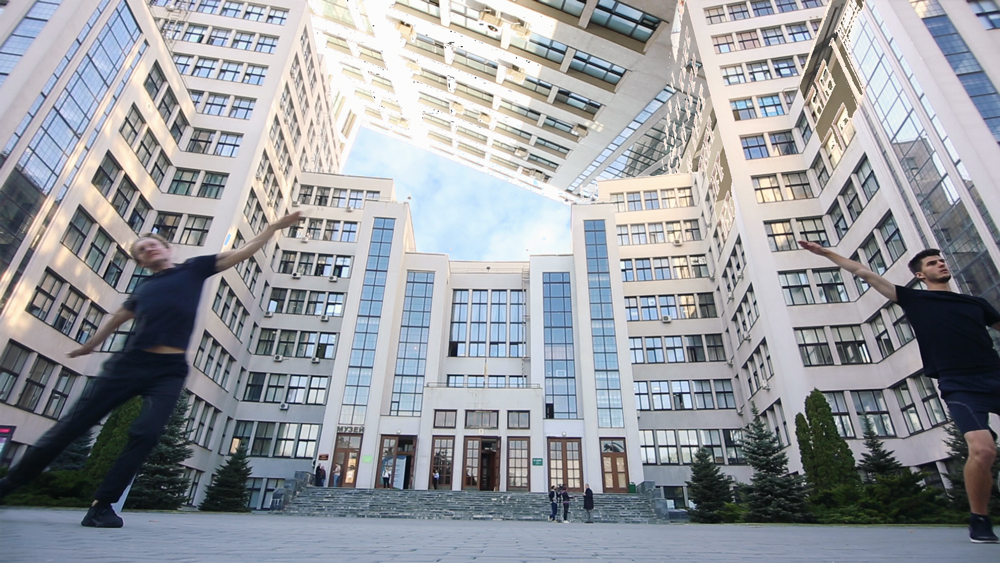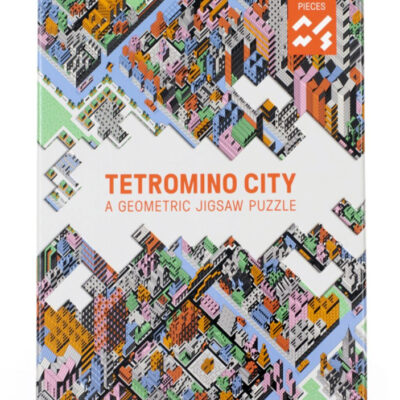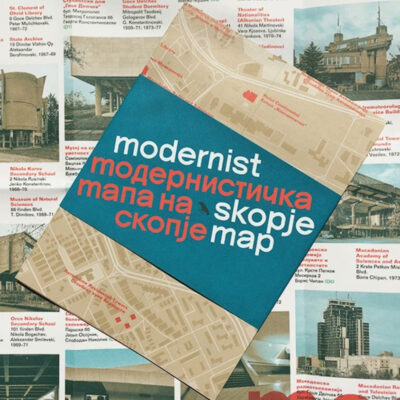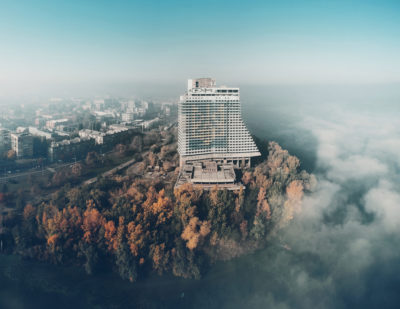Kharkiv 2024
What Now?

War-damaged buildings in the historical centre of Kharkiv. Image Pavlo Dorohoi ©
Shot in September 2021, just four months before Russia’s full-scale invasion of Ukraine, What Shall We Do With Buildings, a film by Jonathan Ben-Shaul about the Soviet-era buildings in Kharkiv, is innocent and prescient, tragic and terrible. It explores the then passionate controversy between modern Ukrainians’ ambition to ‘Ukrainise’ Kharkiv and Russian-speakers’ pride in and affection for, buildings that to them symbolised their culture, heritage and historic achievement. There was already war; remember that Russian-backed insurgents had taken part control of two eastern regions of Ukraine and the Crimea had been annexed by Russia but this was before the futile open Russian attempt to conquer the entire Ukraine in February 2022.
The film weaves together concrete, people and movement
In the film, Soviet-era public buildings are introduced by local voices, Russian speakers, and Ukrainian speakers. This film isn’t polemic, it’s not propaganda, it’s a patient observation, an illustration of the challenges of dissonant heritage; what do cities do with buildings when the political system and dominant culture for which they were constructed is over? We first wrote about the film in April 2022 and now it’s time to revisit this heartbreaking topic.
Watch the entire film here.
There is a wistfulness about the film, an effort to express the issues other than simply in words and in the eloquence of the buildings themselves. Mykola Naboka, the film’s producer, an actor trained in movement, mime and physical theatre, who until the invasion was teaching a movement course at Kharkiv’s School of Architecture, allows us, together with Igor Klyuchnik, to experience the power of these concrete edifices in a very physical way, as the film weaves together concrete, people and movement.
Kharkiv, Ukraine’s second city and the first capital of the Soviet Socialist Republic in 1919 (replaced by Kyiv in 1934), has been at the centre point of an epic tug of war. It was a battlefield in the Great Patriotic War against the Nazis and it was brought under siege again. While Ukrainian resistance and then counter-attacks first held the Russians and then forced them away, it continues to be bombarded and missiles. The state of the buildings featured in the film can’t be known from day to day, but we do know what happened to the people who appear in the film. At the end of the article, we give you the latest we have about the folk involved in the film. We hope they stay safe.
Bird’s-eye views of the historic centre of Kharkiv before the Russian Invasion



Images Pavlo Dorohoi ©
The city revealed in the film goes to the heart of the dissonance dilemma: how should Soviet-era architecture be considered? If that question was relevant when the film was made, it is even more pressing now. The discussion about the post-war reconstruction of Ukraine is well underway – decommunisation was already enshrined in the law On the Condemnation of the Communist and National Socialist (Nazi) Regimes and the Prohibition of Propaganda of their Symbols. Buildings have potency and all across Europe buildings from communist and fascist regimes still exist, are still used, too expensive to re-purpose, too controversial to demolish but we must not underestimate their symbolic power.
the voices of Kharkiv residents must be central to the reconstruction plan
Kharkiv native Ievgenia Gubkina, architect, architectural historian and author, including Soviet Modernism, Brutalism, Post-Modernism, Buildings and Structures in Ukraine 1955 – 1991, is a leading thinker and commentator on what should be done with Kharkiv when it can be reconstructed. With an international brouhaha, Sir Norman Foster’s involvement in a series of projects to rebuild Kharkiv was announced in April 2022. Ievgenia is not alone among Ukrainian architects in being deeply concerned that the project, commissioned by Kharkiv’s mayor, won’t give the people, Ukrainians, Kharkiv residents, influence in how the city is reconstructed. It’s their heritage, their aspirations and their national identity, the very causes for which Ukrainians have been fighting and resisting the invasion, that must be paramount, so their voices must be central to the reconstruction plan.

War-damaged buildings in the historic centre of Kharkiv Image Pavlo Dorohoi ©
Ievgenia, in interviews, has movingly expressed the profound emotional attachment she feels for her city and the pain of not just the lives lost or the people maimed by Russian attacks but the destruction of heritage. Before the war, the tools to protect Ukraine’s precious built heritage were too weak, and Ievgenia fears that preserving and enhancing that which remains won’t be easy in a massive reconstruction insufficiently directed and influenced by the people of Kharkiv. Ievgenia’s new book “Kharkiv” an Architectural guide is due for publication later this year. It’s about the complexity of the relationship between the old and the new in the city, and its precious constructivist heritage made all the more poignant as the city has been on the front line since the Russian invasion, and that built heritage is being destroyed, not by time, not but neglect but by munitions.

War-damaged buildings in the historic centre of Kharkiv Image Pavlo Dorohoi ©
The filmmakers have pledged all proceeds from the film to support humanitarian aid on the ground
Rescue Now is a humanitarian charity that was set up in the wake of Russia’s full-scale invasion by Igor Klyuchnik, who performs in the film. To date, they’ve evacuated 22,000 civilians from combat zones in Kharkiv and eastern Ukraine and continue to deliver thousands of packages of food and medical supplies each month.
The city revealed in the film goes to the heart of the dissonance dilemma: how should Soviet-era architecture be considered? If that question was relevant when the film was made it is even more pressing now. The discussion about the post-war reconstruction of Ukraine is well underway – decommunisation was already enshrined in the law On the Condemnation of the Communist and National Socialist (Nazi) Regimes, and the Prohibition of Propaganda of their Symbols. Buildings have potency and all across Europe buildings from communist and fascist regimes still exist, are still used, too expensive to re-purpose, too controversial to demolish but we must not underestimate their symbolic power.

Derzhprom Building, Freedom Square, Kharkiv What shall we do with these buildings ©
The film-makers
Follow the filmmaker’s progress.
Instagram @wswd_buildings
Instagram @gubkinamodernistka
Facebook @WhatShallWeDoWithTheseBuildings






















